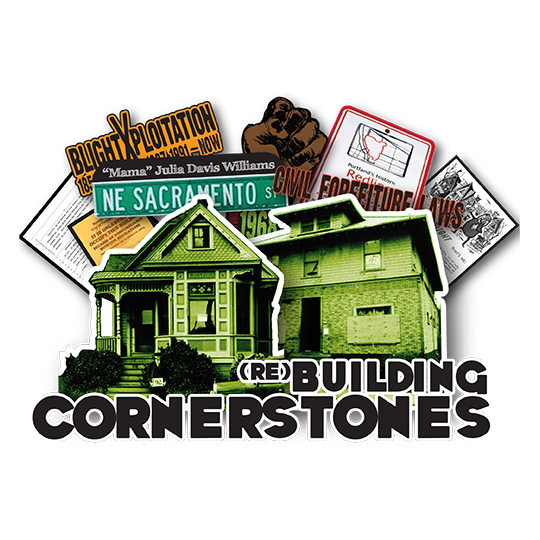2.0: The Routes of a Chocolate City
This iteration of the BC studio embraces their belief that activist-inspired investigations are opportunities to combine independent design and development research with ongoing community input. Taking advantage of Portland’s new residential infill legislation, we will position our work as part of a network of efforts and partners operating in Albina that include, among others, the Albina Vision Trust community investment project headed by the firm El Dorado which will at times provide insights and commentary on our work as well as technical support toward the
comprehensive studio requirements.
INTENT
The studio will seek to properly situate Albina within the network of Black cultural routes that have experienced similar pressures and erasures from both public and private agents and interests that operate either in ignorance of or opposition to local concerns and aspirations. Focusing on community development and economic empowerment through placemaking, we’ll intentionally restructure the default power dynamics of most spatial explorations that situate the needs and desires of dominant cultures at its center.
Understanding cities as intersections of power and place, our work will position the Chocolate City as the primary cultural actor on this stage.
This studio builds on the research of the ARCH 4/507 seminar, using that work as the foundation of design and economic development proposals. The studio furthers the social justice project of the fall by developing design proposals that combine architecture, historic preservation, public policy, and economic development concerns rooted in what remains of Portland’s largest Black community and cultural hub. Resulting project proposals will incorporate input from community members that foster self-sufficiency and resource development in Black Albina through engaging three primary sites:
PROJECT
Studio participants will be charged with producing unique, innovative, and comprehensive proposals that facilitate local empowerment in general, and local African American empowerment in particular. Working both in teams and individually, for three specific sites students will have the opportunity to choose between three project types:
▪ The Mayo House ARTchive: an art hub, studio, archive, and intergenerational community space for the Black diaspora in Portland
▪ BSTRONG Learning Hub: A residential property seeking to build an educational hub in which Black students will build upon their strengths, learn through knowledge-transfer from community elders, and reclaim their spirits and promise
▪ 4504 Haight: A residential property with ties to traditional Black & southern agricultural practices, and a site for possible middle-sized development
The final deliverable will be in the form of a project proposal that includes a comprehensive design, budget, and community-based development strategy; one that is easily disseminated and accessible to the residents surrounding the chosen site.
UNIVERSITY OF OREGON
INSTRUCTORS
Craig L. Wilkins, Belluschi Distinguished Visiting Professor; Faculty Fellow in Design for Spatial Justice
Cleo Davis, Visiting Assistant Professor of Practice; Faculty Fellow in Design for Spatial Justice
Kayin Talton Davis, Visiting Assistant Professor of Practice; Faculty Fellow in Design for Spatial Justice
